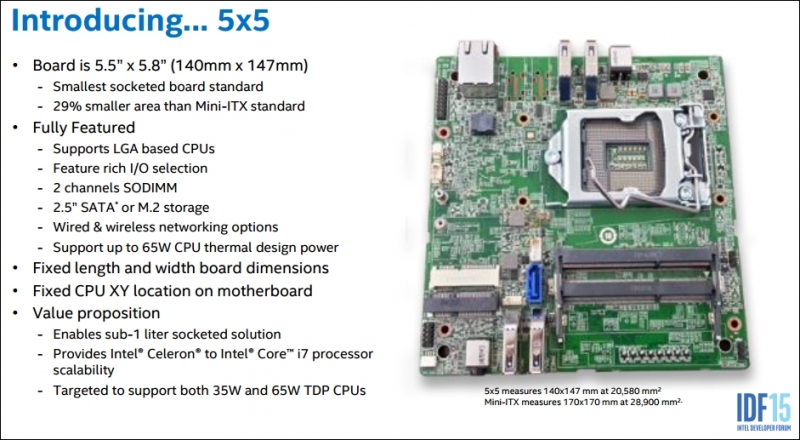
Between Intel’s NUC lineup, its Compute Stick (plus its many copycats) and the plethora of Chromeboxes, there’s never been a better time to buy a computer with a seriously small footprint. Heck, they’re even cramming computers into mice these days!
The one shortcoming that most small form factor systems aren’t able to overcome, however, is raw power. Intel Atom processors and mobile SoCs are fine for light browsing and although Intel’s NUC systems pack a heftier punch, their processors unfortunately aren’t upgradable due to the fact they’re soldered directly to the motherboard.
Intel has been teasing a tiny board with an open socket for several months and at IDF 2015, the chipmaker finally gave it a name.
The Intel 5x5 fits snugly between the Intel NUC line and the Mini-ITX platform. The board measures 5.5 inches by 5.8 inches – hence the name – and is 29 percent smaller than a Mini-ITX board. It features an open LGA socket with standard cooler mounting holes that accepts Intel Core i3, i5 and i7 processors with a TDP up to 65W.
There are also two SODIMM memory slots and support for M.2 or 2.5-inch storage solutions. Intel says there is a “rich I/O selection” as well as wired and wireless networking options.
The 5x5’s small footprint alone affords a wealth of flexibility, as does its upgradability. Unfortunately, Chipzilla didn’t reveal when or even if the 5x5 will be offered as a standalone consumer product.
Image courtesy Liliputing
https://www.techspot.com/news/61851-intel-gives-tiny-socketed-motherboard-name-5x5.html